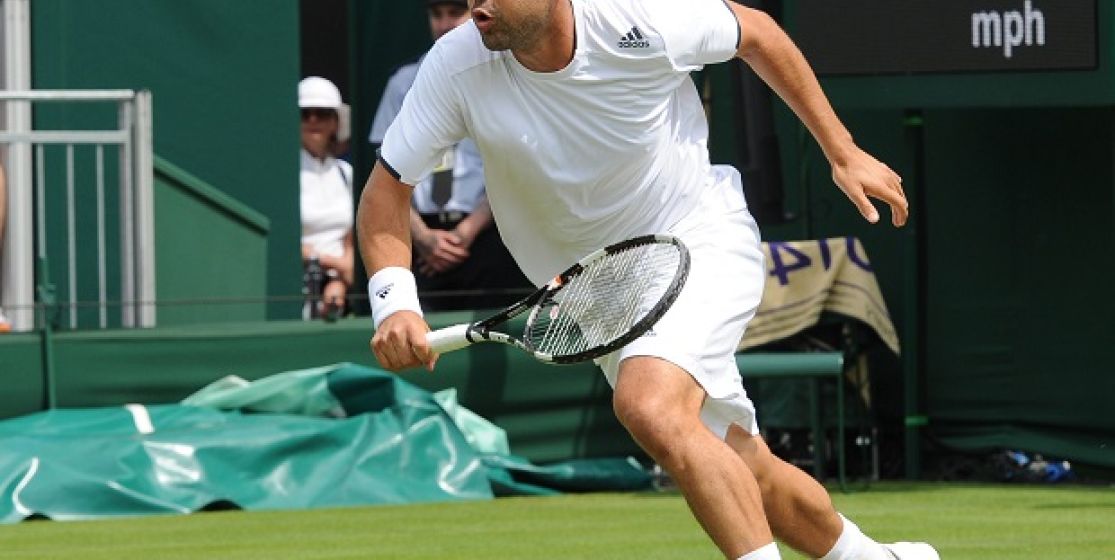In the main table of a tournament, there are the players who are here thanks to their ranking of the moment, while some had to qualify and earn their place. And then there are the others, a handful of guests who benefit from the famous "wild card." Who are they? By what criteria are they selected? And by whom? An investigation had to be done.
The archives of major tournaments reveal that it was in the 80s that the practice of awarding wild cards has spread. The goal? To allow tennis players, in exceptional circumstances, to take part in a competition, although they didn't meet the common selection criteria. In other words, their ranking is too low to integrate the table, but they are still allowed to play thanks to a kind of "royal authority." "It's a committee comprising the Chairman of the National Federation, the Secretary General, the Deputy Vice-President and Tournament Director that validates the allocation of wild cards, says Christophe Fagniez, Chief Operating Officer of the French Open of Roland Garros. A preparatory work is carried out in order to submit a list of players likely to receive the precious pass, also taking into account the proposals of the Technical Delegate." The international authorities of the ATP and WTA have therefore no control whatsoever over the allocation of these wild cards. They just control their numbers. For a Grand Slam, there are eight invitations for the masculine main tournament, as many for the ladies, and the same for the qualifying draw.
What about the award criteria? Christophe Fagniez acknowledges that there is "no rule set in stone. It's all about balance, with a strong principle to be respected: the wild card should go to a player who is likely to achieve a good performance at the tournament." Therefore, it's his fitness and latest results on the playing surface in question that must be the number one criterion for selection. "Besides, Fagniez continues, in the men's table, the four highest ranked French players who couldn't enter the tournament directly were drafted for this 2014 edition." Namely Paul-Henri Mathieu, Michaël Llodra, Albano Olivetti and Pierre-Hugues Herbert. Which brings us to the second award criterion, a crucial one: national preference. In other words, it means that a majority of French player benefit from a wild card to participate to the French Open, as a majority of Australians is invited to Melbourne, Britons at Wimbledon and Americans at the U.S. Open. At Roland Garros, the rule means that, most of the time, French players receive six of the eight invitations allocated in the men table, and the same amongst ladies. Same thing at Flushing Meadows. In Australia, five wild cards are reserved for domestic players. But at Wimbledon, the rule is more blurred.
Ivanisevic against the French-American-Australian pact
Regarding the remaining invitations, they are subject to a partnership between the federations organizing the major tournaments: an American and an Australian are invited to participate every year to Roland Garros, a French and an American at the Australian Open and a French and an Australian at the U.S. Open. "This is a win-win situation, says Christophe Fagniez. There is a kind of solidarity between our three federations, which allows young French, American and Australian talents to participate in Grand Slam tournaments in their home country but also abroad. It's important for their progress." As to why this partnership works only between three, not four Grand Slams, it's because Wimbledon, unlike the other three, is not organized under by a national federation but by a private club, the All England Lawn Tennis and Croquet Club, which has its own rules. A greater freedom which allows them to regularly invite foreign players, not just French, American or Australian. Thus in 2001, the Croat Goran Ivanisevic, three times finalist of the tournament in the past and very popular on grass courts, was awarded a wild card while he was only 125th worldwide. An invitation that he turned into an eventual victory of the tournament, a first! In 2009, the Belgian Kim Clijsters managed a similar feat at the U.S. Open. In a somewhat similar case, Roland Garros' organizers invited Gustavo Kuerten at the end of his career in 2008 to play one last time the tournament of his finest past successes. Marcos Baghdatis, invited this year for his past good performance on grass-court, hopes for his part that it won’t be his swan song…
Overall, however, it is mostly up-and-coming players who are given a wild card. Example with the French Puglia Lucas, who received three in the past year: in the last two editions of Roland Garros and at the last Australian Open. A support that can provide a good momentum for young players, such as casters on a bicycle to help making the first laps safely. Example with Caroline Garcia, who won no less than five wild cards between 2011 and 2013 before successfully integrating major tournaments by the sheer force of her sporting results since the last U.S. Open. Same goes with the promising American player Steve Johnson, invited seven times on major tournaments since 2011 and who finally succeeded to qualify to the last French Open by himself and where he managed to win a match. Proof that the wild card system may have the great advantage of giving a chance to the most promising players. But it's still better to have the right nationality...






